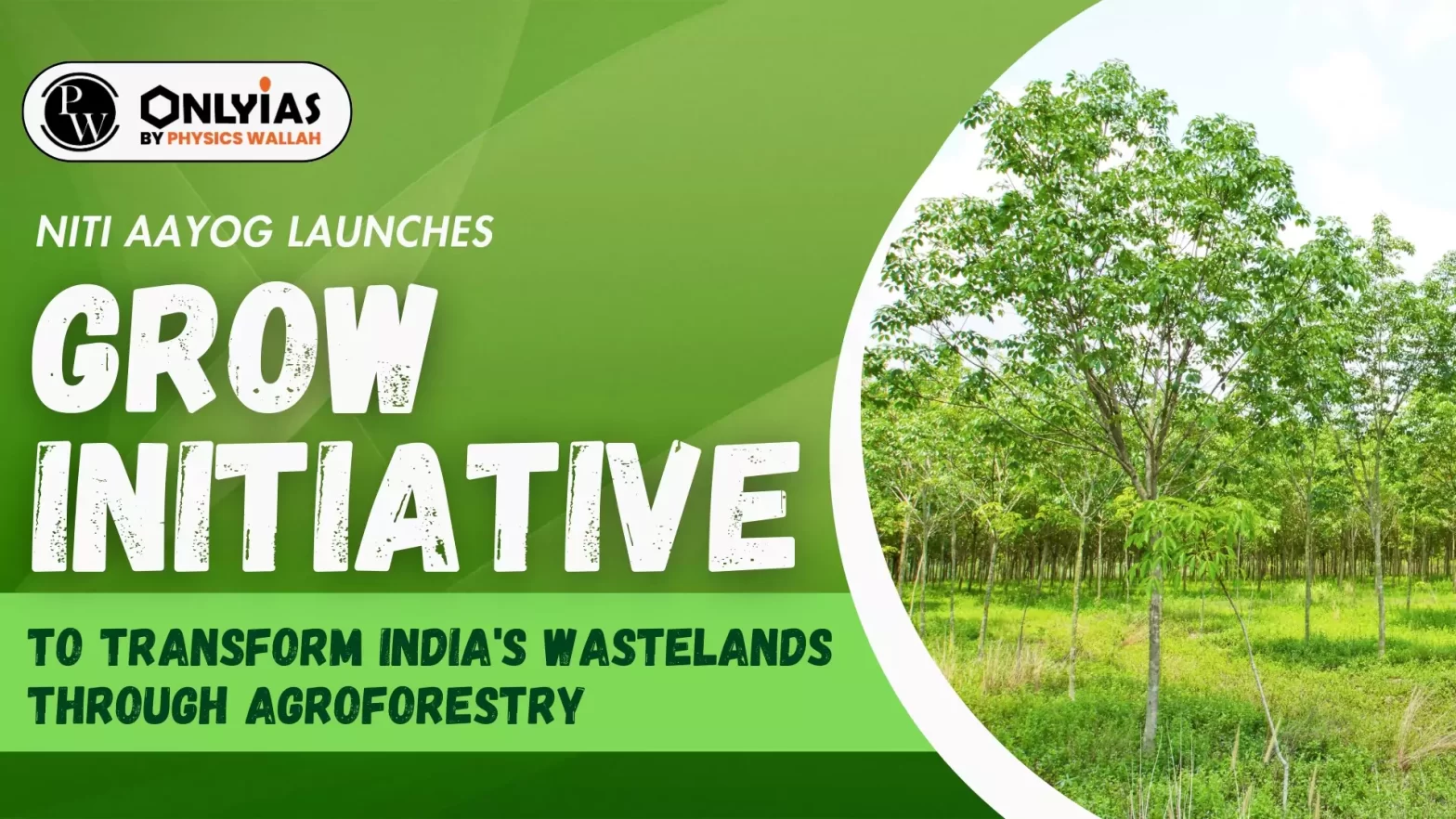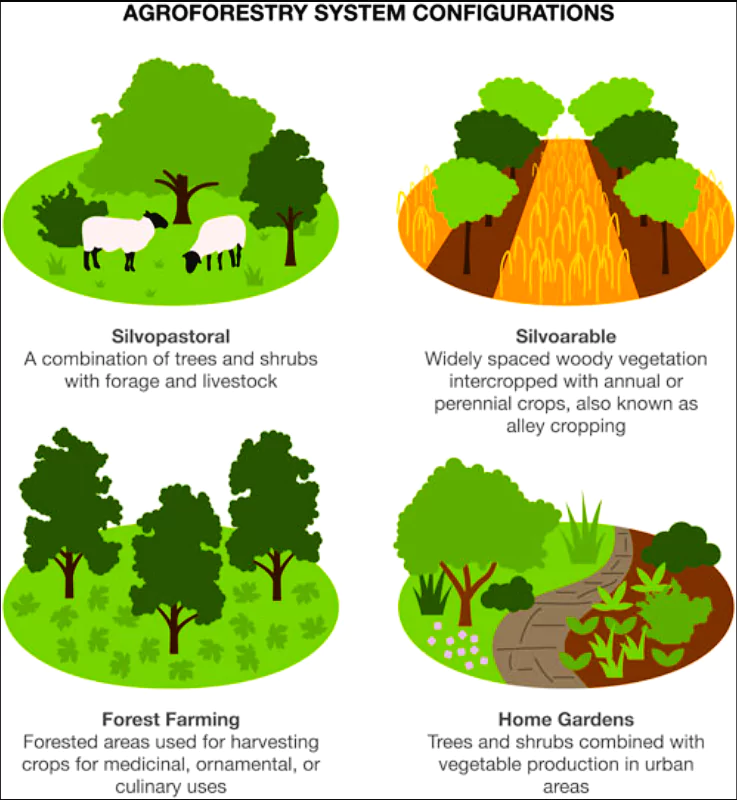
This article is based on the news “NITI Aayog Launches Greening India’s Wastelands with Agroforestry (GROW) Report and Portal” which was published in the PIB. Recently, NITI Aayog launched the Greening and Restoration of Wasteland with Agroforestry (GROW) report and portal.
| Relevancy for Prelims: Land Resources, Agriculture In India, Forests In India, Green Credit Program (GCP), NITI Aayog, and Voluntary Carbon Market In Agriculture Sector.
Relevancy for Mains: GROW Initiative: Greening and Restoration of Wasteland With Agroforestry: Need, Challenges, and Way Forward. |
|---|
 Goal to establish an additional carbon sink capable of sequestering 2.5 to 3 billion tonnes of carbon dioxide equivalent.
Goal to establish an additional carbon sink capable of sequestering 2.5 to 3 billion tonnes of carbon dioxide equivalent.Tree and Grass Species Recommended for Various Types of Lands
|
|---|
Desertification
|
|---|
About Wasteland:
Wastelands Atlas – 2019
|
|---|
Government Steps:
International Efforts:
|
|---|
| Mains Question: Examine the Status of forest resources of India and its resultant impact on climate change. [250 Words, 15 Marks] |
|---|
| Must Read | |
| NCERT Notes For UPSC | UPSC Daily Current Affairs |
| UPSC Blogs | UPSC Daily Editorials |
| Daily Current Affairs Quiz | Daily Main Answer Writing |
| UPSC Mains Previous Year Papers | UPSC Test Series 2024 |
To get PDF version, Please click on "Print PDF" button.
SC Verdict on Newsclick Shows Adherence to Due Pro...
Stay Invested: On Chabahar and India-Iran Relation...
Credit Rating Agencies, Impact on India’s De...
Catapulting Indian Biopharma Industry
Globalisation Under Threat, US Import Tariffs Have...
Global Report on Hypertension, Global Insights and...
<div class="new-fform">
</div>
